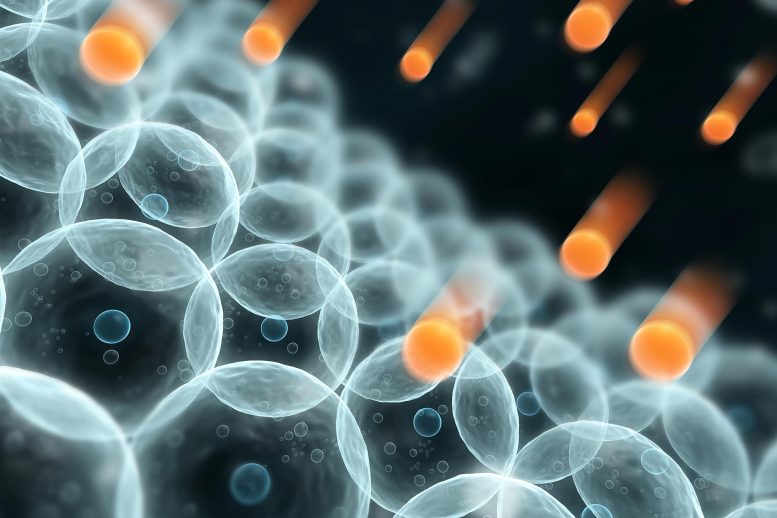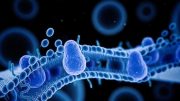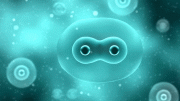Compounds called cyclophospholipids would have held up against the planet’s harsh conditions, helping the first cells form and proliferate.
Researchers must dissect the building blocks of our cells in order to really grasp how the body operates and enhance human health. However, while scientists continue to make significant advances in cellular biology, a crucial issue remains: How did cells develop billions of years ago?
A new study, led by Ramanarayanan Krishnamurthy, Ph.D., of Scripps Research, and Sheref Mansy, Ph.D., of the University of Trento, offers an explanation for how “protocells” could have emerged on early Earth, eventually leading to the cells we know today. Their work, published in the journal SMALL, suggests that molecules called cyclophospholipids may have been the ingredient necessary for protocells to form important internal structures called vesicles, which likely kicked off the evolutionary process.
“Protocells would have been the ancestors of cells today, if you will,” says Krishnamurthy, an associate professor of chemistry at Scripps Research. “They didn’t have the full functionality of modern cells, but they had the precursor behavior to lay the foundation for what came afterward.”
Krishnamurthy is a member of the Simons Collaboration on the Origins of Life and holds a joint appointment with the Center for Chemical Evolution, co-funded by the NASA Astrobiology program and the National Science Foundation. Like many in his field, Krishnamurthy is curious about how early vesicles would have worked.
Cells today teem with different molecules and chemical reactions, but protocells would have been much simpler, like vesicles. One feature these vesicles did have were internal hollow areas called lumen—spaces that could capture bigger and bigger molecules needed for tasks like forming RNA and making proteins, the building blocks needed for life.
Eventually, thanks to vesicles, protocells could have divided into more advanced generations of protocells that took nutrients in from the environment to grow and divide again.
The new study offers a simple solution to the puzzle of how stable vesicles could have developed. In the past, researchers tried using molecules called fatty acids to build vesicles, but these vesicles would react to metal ions and fall apart.
“Fatty acid vesicles just don’t survive many of the conditions found on the Earth, and certainly not the types of conditions needed to get the activity out of biological-like molecules,” says Mansy. “This gap between plausibility and stability has made it difficult for us to imagine how protocells could have emerged.”
Researchers had never before tried using cyclophospholipids to form vesicles, but in 2018, Krishnamurthy’s laboratory published a Nature Chemistry study showing that conditions on early Earth could have led to cyclophospholipids.
After demonstrating that cyclophospholipids could have existed in life’s early days, the researchers set out to see if the molecules could help protocells build vesicles. “We didn’t know whether they’d be stable enough to be useful or functional,” says Krishnamurthy.
It turned out that the new vesicles were surprisingly stable. They stood up to a wider range of physical and chemical conditions than fatty acid vesicles, including changes in pH. In fact, the new findings suggest cyclophospholipids could be the ideal foundation for the vesicles that allowed protocells to evolve.
“Professor Krishnamurthy’s work with prebiotic phosphorylation led us to explore a new type of lipid that shows great promise in helping us to at least understand what kinds of chemical properties were necessary to build a prebiotically reasonable and robust protocell,” says Mansy.
The researchers are now gearing up to run cyclophospholipid vesicles through even more strenuous tests, answering deeper questions. They would like to know if these vesicles are compatible with other important processes needed for evolution, such as non-enzymatic RNA replication.
The study, “Cyclophospholipids Increase Protocellular Stability to Metal Ions,” also included first author Ö. Duhan Toparlak of the University of Trento; and Megha Karki and Veronica Egas Ortuno of Scripps Research.
The research was supported by the Simons Foundation (SCOL 327124 to R.K. and 290358FY18).
References:
- “Cyclophospholipids Increase Protocellular Stability to Metal Ions” by Ö. Duhan Toparlak, Megha Karki, Veronica Egas Ortuno, Ramanarayanan Krishnamurthy and Sheref S. Mansy, 15 September 2019, SMALL.
DOI: 10.1002/smll.201903381 - “Phosphorylation, oligomerization and self-assembly in water under potential prebiotic conditions” by Clémentine Gibard, Subhendu Bhowmik, Megha Karki, Eun-Kyong Kim and Ramanarayanan Krishnamurthy, 6 November 2017, Nature Chemistry.
DOI: 10.1038/nchem.2878










Be the first to comment on "How Did Cells Originally Form Billions of Years Ago? Scientists Identify Molecule That May Be Key to Emergence of Life on Earth."